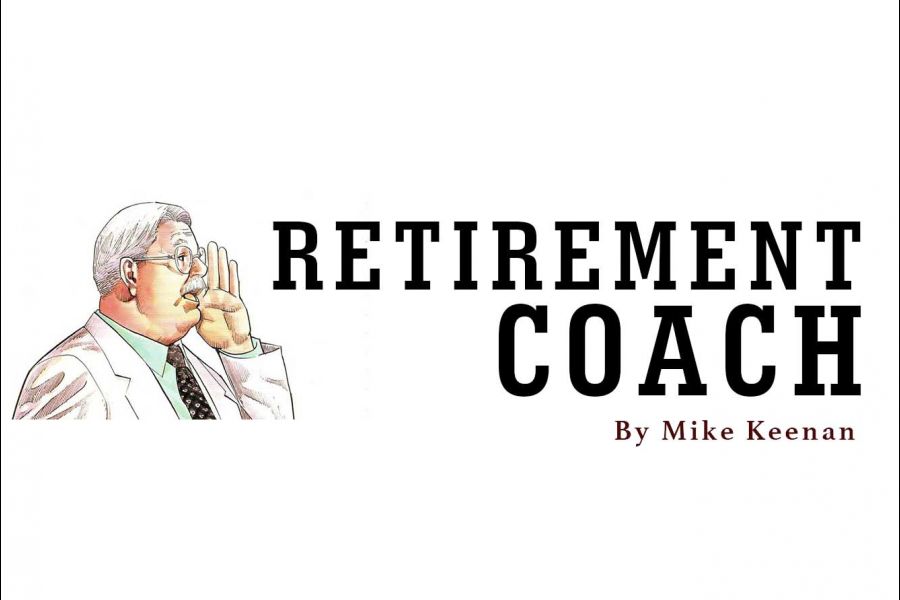Niagara-on-the-Lake’s Mike Keenan is an award-winning poet, columnist and podcaster. He has led writing workshops, including a week-long course at the Chautauqua Institution in New York. This is his inaugural column.
Mike Keenan
Special to The Lake Report
With fake news and alternative facts, misinformation abounds today. I will explain modern day politics in simple terms. I served on several municipal councils, so I know what I’m talking about. Don’t listen to Fox or CNN.
In hockey, there’s a left wing, centre and a right wing on each forward line. Some try to simplify politics by relegating people to such positions, but both wingers are equally important, and how did we get into this metaphor?
Blame it on the French, who invented the “Napoleon Complex,” the little guy who desperately wants to be a big deal.
Napoleon was only 5 feet 6-1/2 inches tall, but his true hostility may have stemmed from undersized genitals revealed in his autopsy. The French think that they're great lovers, inventing the “French Kiss.”
They also claim that they make love more than anyone else, on average, 137 times a year while the rest of us sluggards are stuck at less than 120.
In the French seating arrangement in the Estates General, (similar to Parliament), those who sat on the left opposed the monarchy and supported the revolution, including the creation of a republic and secularization, while those who sat on the right were supportive of the traditional institutions of the Old Regime.
That’s how political wings started. Now, we have the far left and the far right and the far, far right or Attila the Hun parties. Some think the left has shifted like a tectonic plate to the centre or even to the right of centre and that the right isn’t even on the ice any more because, after all, they own all of the rinks.
Canadian parties cover the entire ice surface from left to right: New Democrats, Liberals and Conservatives, the top three. In the United States, the Democrats and Republicans correspond with liberal and conservative ideologies.
Differences are explained by another metaphor, life-saving. If someone is drowning, the liberal jumps into the water, swims quickly to the drowning person and heroically brings him back safely to land. In contrast, the conservative throws a life buoy attached to a rope precisely halfway out and shouts for the drowning person to swim for it.
Strangely, there have been occasions, just as in hockey, when a left winger skates over to the right and a right winger slides to the left. This is called “political expediency.”
It often involves an unsuccessful leadership run by the aforementioned skater. The loser has no alternative but to retreat to the opposite team. When this occurs, they make ugly faces at their opposition and taunt them with nasty words of rebuke.
Sometimes entire political parties are taken over by one-man rule such as a dictator or a military coup or even a reality TV show star. This sounds fanciful, but it actually happened. While Germany is led by a woman with a Ph. D. in chemistry, the Ukraine is led by a comedian. That’s politics!
There are also fringe parties. The Green Party favours a strong federal government, grassroots democracy, nonviolence, social justice and environmentalism.
The Libertarian Party favours limited government intervention in personal, social and economic issues. Nationalists promote their nation and believe in its superiority over others, like rival gangs in an inner-city. (Watch “West Side Story” when you get a chance and you will see the Jets vs. the Sharks, great names for political parties or professional sports teams.)
How do people vote? For a long time, many did not. Women, for example. Canadian women waited until 1918 and American women, 1919. Men did not want to burden women with voting because they were so busy with housework. Men tend to be clear-thinking like that.
My mother’s voting habits amused me, not hampered by wings or parties or platforms or promises made to steal away her vote. She didn’t care if you were liberal or conservative, rich or poor. What she cared about was your looks.
Coming from a small town, rural background, she appraised a politician like a farmer appraised a horse. If you had good teeth and a nice smile, it was as simple as that. A candidate’s eyes and hair were other factors to be weighed. She didn’t care if you were pro-gun or anti-gun.
The bottom line is that voters ask one simple question of their would-be representatives: what’s in it for me? In Canada, it led to universal health care. To be honest, with so many disappointments in the past with those I have supported, I’m moving closer toward my mother’s technique.
Don’t get me started on appearance versus reality. We could be here all day long.
Mike Keenan belongs to the NOTL Writers’ Circle. Follow his podcasts: The Retirement Coach: http://theretirementcoach.libsyn.com/and Travel: http://whattravelwriterssay.libsyn.com/










